#Moravian American
Text
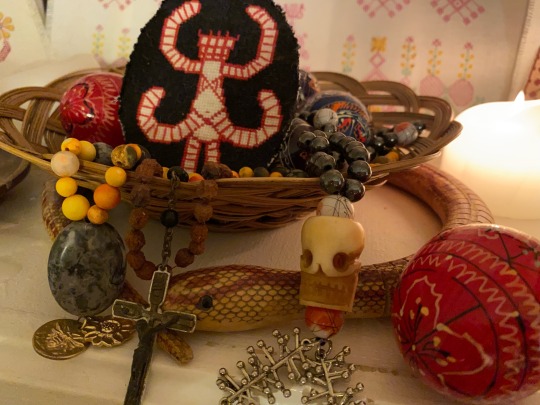
My prayer beads from left to right: a set dedicated to Morana/light half of the year, Granny’s rosary, a set dedicated to Morana/dark half of the year.
#Slavic#Slavic pagan#Roman Catholic#dual faith#Morana#Marzanna#Smrtka#Easter altar#Spring Equinox altar#prayer beads#rosary#Czech American#Moravian American
32 notes
·
View notes
Text
#TilesOnTuesday + #TwoForTuesday:


165 & 349 “Porcupine”
Usually these tile pairs are duplicate compositions, but not these! 👀
From the ongoing search for all the animals from the 420 original 1906 Moravian tile mosaics by Henry Mercer on the Pennsylvania Capitol floor.
#animals in art#20th century art#museum visit#porcupine#tilework#Henry Chapman Mercer#Mercer tiles#Moravian tiles#1900s#Pennsylvania art#American art#decorative arts#ceramics#mosaic#Arts and Crafts Movement#historical buildings#PA Capitol#PA history#Tiles on Tuesday
346 notes
·
View notes
Text

Important and Rare Moravian Glazed Red Earthenware Fish Flask
Attributed to Rudolph Christ
Salem, North Carolina
Circa 1801-1825
Decorated in mottled green copper and brown manganese glazes over
a yellow clay ground molded with scales, fins, and eyes.
Sotheby’s
51 notes
·
View notes
Text
Huts of Grace
In lands of strife where armies clash, 'twixt verdant wood and river's dash,There stood a village, peace its brace, the Christian Indians' hallowed place.Gnadenhutten, grace's huts, where faith was sown in open cuts,The Jesus Indians, meek in stance, embraced their Lord's nonresistance.A boy amongst the martyred throng, I tell our tale, both sad and long,Of how we sang in hymnal voice, with…

View On WordPress
#American revolutionary war#Christianity#Gnadenhutten massacre#huts of grace#moravian#Native American#Nonresistance#Pacifism#peace#poem#Poetry#Shalom
2 notes
·
View notes
Text
Unlocked Book of the Month: History, Manners, and Customs of the Indian Nations Who Once Inhabited Pennsylvania and the Neighbouring States
Each month we’re highlighting a book available through PSU Press Unlocked, an open access initiative featuring scholarly digital books and journals in the humanities and social sciences.

About our February pick:
First published by the Historical Society of Pennsylvania in 1818, History, Manners, and Customs of the Indian Nations provides an account of the Lenni Lenape and other tribes in the mid-Atlantic region, looking at their history and relations with other tribes and settlers, as well as their spiritual beliefs, government and politics, education, language, social institutions, dress, food, and other customs. The text, written by the Reverend John Heckewelder, a Moravian missionary based in Ohio and Bethlehem, Pennsylvania, includes the author’s observations, anecdotes, and advice, preserving not only his knowledge about the Indian nations in the eighteenth century but also his perspective, as a missionary and settler, on Native Americans and the often-fraught relationships between the tribes and European settlers. This version of the text, published in 1876, contains an introduction and notes by the Reverend William C. Reichel as well as a glossary of Lenape words and phrases and letters between the author and the then-president of the American Philosophical Society concerning the study of the Indian nations and their languages.
Read more & access the book here: https://www.psupress.org/books/titles/978-0-271-06701-8.html
See the full list of Unlocked titles here: https://www.psupress.org/unlocked/unlocked_gallery.html
#Pennsylvania#Pennsylvania History#PA History#Lenni Lenape#Indian#Native American#Mid-Atlantic#Atlantic#Moravian#John Heckewelder#Ohio#Eighteenth Century#Nineteenth Century#Lenape#American Philosophical Society#PSU Press#PSU Press Unlocked
6 notes
·
View notes
Text
amazing how you can just… go be a tourist somewhere without knowing a lick of the language.
Dad decided to take us to Germany for his birthday. None of us speak a word of German.
#And before anyone says ‘oh you stupid Americans’ everyone in this family speaks Spanish and French on top of English thank-you-very-much#it’s just he’s always wanted to visit herrnhut and now we’re visiting herrnhut#I guess it’s sorta a Moravian pilgrimage type deal
0 notes
Text

I finally finished this documentary-drama series from 2013, and I highly recommend it, if you have any interest in the War of 1812. Commentary from a diverse group of historians representing Canadian and US perspectives (including Indigenous historians) is interspliced with reenactments of events on the western frontier of Upper Canada. They didn't have the biggest budget, but it's as close as you can get to a War of 1812 movie.
The focus of the three-episode series is on the suffering of ordinary people in the region, who wanted nothing to do with the war but found themselves in a war zone. Clockwise from top left, three of the actors in the series are portraying Duncan McArthur, who was a commander of the U.S. Army of the Northwest and later governor of Ohio, Brother Denke of the Moravian religious community, who repeatedly relocated to escape the war, and Andrew Westbrook, "the traitor Westbrook" who supported the invading Americans despite being a descendant of Loyalists in Upper Canada.
I watched the first two episodes thinking that the title referred to growing cultural and ideological differences caused by the War of 1812 pitting neighbor against neighbor, but there was a significant Title Drop moment in the last episode when it was revealed to be a phrase used in a letter by Michigan territory governor Lewis Cass. Cass was advocating for the complete devastation of Upper Canada to create "a desert between us and them" that could not feed or support British troops and their Indigenous allies.
Look—I love my country, but there's just no getting around the fact that the USA is the villain in the War of 1812. We invaded Canada on flimsy pretences for a landgrab and caused incredible devastation to specifically civilian areas (e.g. the Burning of York); it was even worse on the frontier. It also does not reflect well on us that the British had planned for years to exploit the many discontents in the territories of the United States: enslaved people who would eagerly work against their enslavers, and Indigenous people who had been exploited and attacked after multiple violated treaties and military incursions.
Almost needless to say, both of these groups fought for the British in the War of 1812. (Black and Indigenous veterans on the US side were poorly treated, despite their loyalty). The War of 1812 ultimately expanded slavery in North America, and it's directly connected to imperialist ideas of Manifest Destiny that saw the US turn to western expansion and the forced removal of Indigenous residents. The more you examine the beliefs of the War Hawks the worse we look!
Even knowing all this, A Desert Between Us and Them made me reconsider some of the narratives I've read about the War of 1812 in Upper Canada (the part of modern-day Ontario between all of the Great Lakes). I have read several academic articles and books recently that were critical of the Kentucky Militia, but they didn't say anything about their terrorism of Upper Canada! They're a lot less sympathetic in this account.
youtube
(This YouTube channel has many excerpts from A Desert Between Us and Them)
McArthur's raids are part of a more brutal phase in the War of 1812. They really did use Napoleonic era total war strategy, and the towns of Upper Canada's western reaches were depopulated for years. I appreciated how A Desert Between Us and Them explored some of the political intrigue and personal rivalries between all of the militia and community leaders in the Old Northwest/Upper Canada region at the time.
The trailer is worth a watch! (link if embedded video doesn't work).
youtube
#war of 1812#documentary#military history#canadian history#us history#a desert between us and them#the guy playing duncan mcarthur is one thousand times hotter than the real guy#they have a decent sir isaac brock#one hundred fixed typos later#i published this by accident while editing
37 notes
·
View notes
Text
Andy Griffith

Physique: Stout Build/Chubby
Height: 6' (1.83 m)
Andy Samuel Griffith (June 1, 1926 – July 3, 2012; aged 86) was an American actor, comedian, television producer, singer, and writer whose career spanned seven decades in music and television. Known for his Southern drawl, his characters with a folksy-friendly personality, as well as his gruff but friendly voice, Griffith was a Tony Award nominee for two roles. He gained prominence in the starring role in director Elia Kazan's film A Face in the Crowd (1957) and No Time for Sergeants (1958) before he became better known for his television roles, playing the lead roles of Andy Taylor in the sitcom The Andy Griffith Show (1960–1968) and Ben Matlock in the legal drama Matlock (1986–1995).



Griffith was born in Mount Airy, North Carolina, Griffith's first career ambition was to be an opera singer. Later, he decided he wanted to become a Moravian preacher, and enrolled as a pre-divinity student at the University of North Carolina at Chapel Hill in 1944. While in college, he became involved in drama and musical theater and graduated in 1949 with a degree in music. Griffith taught high school music for three years before setting out, with his new wife, Barbara Edwards, a fellow actor at UNC, on a career as an entertainer.


Sure everybody loved him as sheriff Andy, but it was his portrayal of Ben Matlock that got my blood pumping. He seem to go from a tall, lanky man in The Andy Griffith Show, to a short chubby one by the end of Matlock, aging beautifully with his ‘perfect’ silver hair and still bangable if not more so.




Griffith was married three times, first to Barbara Bray Edwards on August 22, 1949, and they adopted two children: a son and a daughter. They divorced in 1972. Griffith's second wife was Solica Cassuto, a Greek actress. They were married from 1973 to 1981. Griffith and Cindi Knight married on April 12, 1983, and they remained married until Griffith's death. Apparently, Aneta Corsaut and the married Griffith had an ongoing affair throughout the five years they worked together on The Andy Griffith Show; the affair was an open secret amongst the cast and crew.





Griffith, who died at his home in Roanoke Island, N.C., at 86, was an unlikely star from the beginning to the end of his long career. And unlikely sex symbol. He didn't look like a leading man, and he certainly didn't sound like one when he opened his mouth. Yet his impact on television and me personally, was nothing short of monumental.

RECOMMENDATIONS:
Play the Game (2009)
Waitress (2007)
Matlock (TV Series 1986–1995)
The Andy Griffith Show (TV Series 1960–1968)
A Face in the Crowd (1957)
24 notes
·
View notes
Text
My Sins Return to Visit Me: Atrocities, Whiteness, and Cosmic Justice in The Patriot
As he watches over the body of his slain son just before The Patriot's final battle, Benjamin Martin confides to his friend, Harry Burwell, that he believes Gabriel's death is some kind of divine repayment for his past wrongs: "I have long feared that my sins would return to visit me, and the cost is more than I can bear." This line also appears at the very beginning of the film, replacing scenes that were filmed but not included in any released edition featuring Martin's actions at Fort Wilderness during the French and Indian War years prior. We hear it in a voice over as Martin closes the trunk lid on his Cherokee tomahawk. Not only is he haunted by his past, but this representation of the American Revolution is haunted by the Cherokee people in spite of writer Rob Rodat and director Rolad Emmerich's attempts to erase them. Although the narrative brushes Martin's words here off as simple grief, I would argue that this reading of his past is more historically honest than the one the film's ending suggests.
In a broad sense, this film appropriates Native identity for the Patriots in the same way Benjamin Martin appropriated that tomahawk. In The Patriot's logic, these men defeated the British because they were fighting to protect their homes and families, they knew the terrain well from a lifetime spent living on it, and they made use of guerilla tactics to gain an advantage over stronger forces. Meanwhile, the British, personified by Colonel Tavington, are brutal colonizers motivated only by greed. It is not hard to see how including Native characters would trouble this interpretation. Only one scene in the film features any, scouts who drop off the single survivor of Benjamin Martin's massacre in the woods at Colonel Tavington's camp. Apart from this, the only onscreen representation the Cherokees have is Martin's tomahawk, and the film only tells their story through the lens of his memories.
Ironically, presenting the Patriots as "native" ends up meaning Tavington's treatment of them bears striking resemblance to historical Patriots' treatment of the Cherokees and other tribes. It is unclear how many homes Tavington has targeted in the beginning of his screentime to have earned the nickname "the Butcher" that General O'Hara informs us about, but after Cornwallis allows him to resume these tactics, he burns eight Patriot homes, killing the inhabitants before burning Pembroke Church with its congregation inside. A few years prior from 1776-1777, a period the film skips over, Patriot forces had waged war against the Cherokee nation for its support of the British crown with devastating effects. Historian Jordan Baker writes in "The Cherokee-American War from the Cherokee Perspective:"
"All along the border, American troops launched a scorched earth campaign. And with each victory the Continental forces earned, they burned Cherokee towns and took survivors prisoner. By the end of the campaign, they had destroyed over fifty Cherokee towns, including crops and livestock, and killed hundreds of Cherokee, enslaving the survivors and sending them as far off as the Caribbean."
Among Tavington's first lines in the film are orders surely similar to those Continental officers gave in the aforementioned Cherokee towns: "Fire the house and barns. Let it be known that if you harbor the enemy, you will lose your home." Even the worst excesses of Tavington's cruelty have more in common with Americans' treatment of Native peoples after the war than any British actions during it. For example,
"In March 1782, after Indian attacks upon American settlements on the western frontier, militiamen under the command of Col. David Williamson attacked the Moravian Christian Mission at Gnadenhutten. Peaceful Delaware Indians, who had converted to Christianity, were rounded up, and ninety-six Delaware Indians, men, women, and children, were bludgeoned to death."
Perhaps most ironically, Tavington's lust for the Ohio valley is a sentiment that historically belonged to his enemies. According to Jason Edwin Anderson, American land speculators, including George Washington, had designs on this region, but the Royal Proclamation of 1763 recognized Native sovereignty there and barred settlement beyond the Appalachian Mountains. As a result, expansion was a stronger motive for independence than freedom from British tyranny in the western colonies. In almost every case, Tavington's atrocities and the reasons behind them are displaced American ones. Under different circumstances, he would have been a model Patriot.
Reading The Patriot by light of the Native stories it erases makes it less a story of hardy pioneers and their effete oppressors than of one set of brutal colonizers being given a taste of their own medicine by a slightly more recently arrived brutal colonizer. However, there are a couple of crucial and related differences between Tavington's fictional atrocities and the Patriots' historical ones. First, Tavington's reach is far more restricted. General Cornwallis grants him permission to utilize brutal tactics solely in service of capturing Martin. He does not direct his other officers to coordinate with Tavington and kill as many rebels as possible. Why? In Cornwallis's words, "These colonials are our brethren." Not "These colonials will be our brethren after we win the war," which would suggest a political meaning to "brethren." That they are brethren now suggests that this brotherhood is based in something unchangeable, like race.
Even Martin concedes the humanity of British soldiers; he offers Rawlins a bounty for their gear, not their scalps. His disposal of his enemies at Fort Wilderness also evinces a more profound hatred for Native people; he sends a raft full of heads and two men alive "to tell the tale" to the French fort but baskets of eyes, tongues, and fingers to the Cherokees with no one to explain what happened. Tavington holds Whiteness in no such esteem. He murders people of color, too, shooting some Black men for refusing to give him information, but their fate pales in comparison to the one that awaits the White congregation of Pembroke Church for the same reason. What appears to make Tavington's actions so aberrant in this context, and so shocking to the film's heroes even after he does the same things numerous times, is not their brutality or that they are directed against non-combatants, but that he targets other White people.
I can't help wondering how the Cherokees would have reacted to their ally in red and green had they been present in the film to do so. I imagine very different responses. On the one hand, some might have felt apprehension about the Patriot retribution that would follow Tavington's actions stemming from their own memories of Fort Wilderness. Others, also with Fort Wilderness on their minds, may have felt that Tavington had thrown the party of the year at Pembroke Church and rudely failed to invite them. Surely some of the scouts who bring Tavington the survivor are the right age to have received Martin's baskets from Fort Wilderness as children, but they are denied the opportunity for vengeance that Martin so eagerly indulges for himself. That would have been an even more fitting means of Martin's sins returning to visit him, if that was indeed what the filmmakers were aiming for.
Instead, they retreated even further from Cherokee representation than originally intended. The extended cut features a very brief scene in which Captain Bordon informs Tavington that the Cherokee scouts have arrived, and the two officers approach two scouts who stand facing them before the camera cuts away. In the theatrical release, the scene opens on the scouts' backs as they walk through the camp, and the camera cuts to Tavington and Bordon entering the tent where the wounded private is being treated. Apparently even showing Tavington in the same frame with Cherokee men emphasizes too clearly that the British were allied to people many Patriots, Martin obviously included, viewed as subhuman.
If Martin did maintain his view of the loss Tavington visited on him as a kind of cosmic justice, it would make him a far more interesting and reflective character. It would mean he recognized, on some level, that there was a price to pay for his horrific, racially-motivated violence beyond just feeling guilty. Moreover, it would have acknowledged that American imperialism was no less greedy and destructive than British imperialism. If the film supported that reading, Martin might have died along with Tavington, or at the very least lost his ill-gotten gains. Instead, the film ends with him watching the construction of his new home in the exact spot where the former one stood with the sun beaming down on him and his family.* After ordering Wilkins to burn the church, Tavington tells him, "This will be forgotten," but here we are clearly meant to have forgotten about Martin's atrocities already. This becomes more poignant when we consider that the same Royal Proclamation of 1763 that forbad British settlement beyond the Appalachian Mountains also granted land to men who had served in the French and Indian War, including 3,000 acres to captains, the rank Benjamin Martin held. Not only did he commit similar atrocities to Tavington, but he received the very reward for them that Tavington covets, and from the same hands. For all Martin's claims to feel guilt over his past actions, his life is a brutal tactics success story, one only reinforced by the film's ending.
*Some commentors have argued that the house being rebuilt is actually Charlotte's. While I don't think that's the case, it would still support my point. Charlotte's house was the larger of the two. presumably with even more land attached. It's an upgrade!
#the patriot#american revolution#anti-native racism#american imperialism#american genocide#william tavington#benjamin martin
13 notes
·
View notes
Text
getting death threats from americans for saying Episcopalians are just anglicans with a patriotism problem and death threats from brits for saying anglicans are just wannabe lutherans and death threats from germans for saying Lutherans are just moravians who were late to the party and death threats from Czechs for saying Moravians are just rebellious catholics and death threats from italians for saying catholics are just greek orthodox who like stealing shit and death threats from greeks for saying greek orthodox are just mormons who were ahead of their time and death threats from mormons for saying they're really really racist and thus the cycle repeats itself (death threats from americans again)
8 notes
·
View notes
Text
“The instruction of girls was not meant to prepare them to take part in political life. Women were not citizens on par with men in the new United States. Except in New Jersey, they could not vote or hold public office. In most ways the establishment of a republic had left women’s political status unchanged. But in a few subtle areas, progress was made. Women’s work as mothers assumed greater purpose. Mothers were largely responsible for the early education of their children. They could rear either strong, virtuous children who would become valuable citizens or lazy, ignorant youngsters who could be corrupted easily and thus become undesirable members of society.
…For women to do their job properly, they needed to possess high moral standards. They could learn these standards best if they were educated and religious. Ideally, all women should be able to read, write, keep accounts, and think logically about current issues. They were also expected to attend church and heed the moral directions of their ministers. The middle and upper ranks of American society had even higher standards for women’s education by the end of the 18th century. Among wealthy women, poor reading, writing, and speaking skills became unacceptable. Elite men wanted their daughters to receive an education similar to that of their college-bound sons.
…The curriculum of female academies focused a great deal on subjects previously considered frills: rhetoric, grammar, geography, history, arithmetic, and oratory. Now the areas of study that once had been thought essential for elite women--music, dancing, and needlework--were regarded as recreational activities or not taught at all. Although many girls continued to study these subjects and to receive praise for doing so, intellectual development was regarded as equally or more important.
…Soon boarding schools for girls also opened. They appeared in rural areas as well as towns and answered a need for families who did not have relatives living in a northeastern city. One of the most successful was the Moravian Seminary in Bethlehem, Pennsylvania, which had a reputation for strictly supervising the morals of its students while providing an advanced curriculum. …Parents were particularly concerned that their daughters receive moral instruction at boarding schools, where girls lived for extended periods of time. At the Moravian Seminary, for example, students stayed for a maximum of about three years, beginning when they were as young as 10 or 12 years old.
…When mothers wrote to their daughters at school, they frequently stressed the importance of diligence and urged their daughters not to waste their time. In turn, many girls recognized that they had been given a privilege their mothers had not enjoyed, and that their absence from home represented considerable maternal sacrifice. After all, during these years they could be of greatest help to their mothers in running their households. For some families, doing without a teenage daughter’s labor must have been as difficult as paying for the cost of her higher education.
…Although girls strove for academic excellence, they had nowhere to employ their education after graduation. Colleges were closed to women during this era, and so were the professions. Women might become skilled healers, but they could not attend medical school and become licensed physicians. They might offer religious instruction in their homes, but they could not serve as ministers for any congregations, except those of the Quakers. They might run successful businesses as single women, but when they married, the law demanded that they have their husbands’ permission to continue working outside the home.
…Under the laws of England as enforced in the United States, married women could not own property in their own name without special (and rare) contracts called marriage settlements. Everything a woman brought to marriage became her husband’s. Movable goods became her husband’s absolutely, and a man could sell or give away his wife’s movables at will. Men’s control over women’s real estate was restricted, however. A husband could not mortgage or sell his wife’s land unless the woman consented and signed deeds stating she did so of her own free will. But during marriage, a man could manage his wife’s real estate and take all the rents and profits for his own use.
…After the Revolution, all the new states made divorces easier to obtain. Some legislatures voted to allow both formal separations with property divisions, and absolute divorces that permitted remarriage. Others provided only for separations. But everywhere it was acknowledged that women and men needed legal recourse for disastrous marriages. …Freedom from English law allowed Americans to institute reforms in marriage that England adopted only in the 20th century. Both women and men benefitted from the new laws, which acknowledged male as well as female adultery and prohibited physical cruelty. American lawmakers congratulated themselves on their liberality to the female sex, but the courts still favored men. They routinely demanded more evidence of men’s wrongdoing than women’s and automatically gave men custody of their children.”
- Marylynn Salmon, “Independence Realized: New Directions for American Women.” in The Limits of Independence: American Women, 1760-1800
8 notes
·
View notes
Text
Dr. James Francis Shober (August 23, 1853 - January 1, 1889) was a doctor and the first known African American physician to practice in North Carolina. He was born in or near the Moravian town of Salem, North Carolina. His father believed to be Francis Edwin Shober, was a successful white businessman and politician in the Salem Moravian community who served in the North Carolina state legislature and Congress. His mother, Betsy Ann Waugh, was a mulatto enslaved who was eighteen years old when he was born.
It is unclear how he obtained schooling when he was a child. In 1875, he graduated second in his class, with a grade average of 95.5, from Lincoln University. He received an AB. He enrolled in the Howard University School of Medicine where he was one of forty-eight graduates.
There were only a handful of licensed African American doctors across the US following the Civil War. He set up his practice in Wilmington, North Carolina, the largest city in the state. Wilmington had a sizeable African American population.
He married Anna Maria Taylor (1881) and the couple became parents of Mary Louise and Emily Lillian, both of whom went on to graduate from Fisk University. Anna Marie Taylor Shober was an educator who taught at the Peabody School in Wilmington. #africanhistory365 #africanexcellence

4 notes
·
View notes
Text
For #MosaicMonday + #InverteFest:

94. “House Fly” 🪰 from the ongoing search for all the animals from the 420 original 1906 Moravian tile mosaics by Henry Chapman Mercer on the Pennsylvania Capitol floor.
#ceramics#tilework#mosaic#20th century art#1900s#American art#Pennsylvania art#Pennsylvania history#Pennsylvania capitol#Henry Chapman Mercer#Moravian Pottery and Tile Works#Mosaic Monday#house fly#insect#insects#insects in art#animals in art#InverteFest
481 notes
·
View notes
Photo
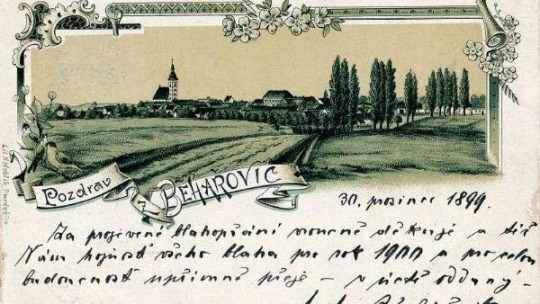

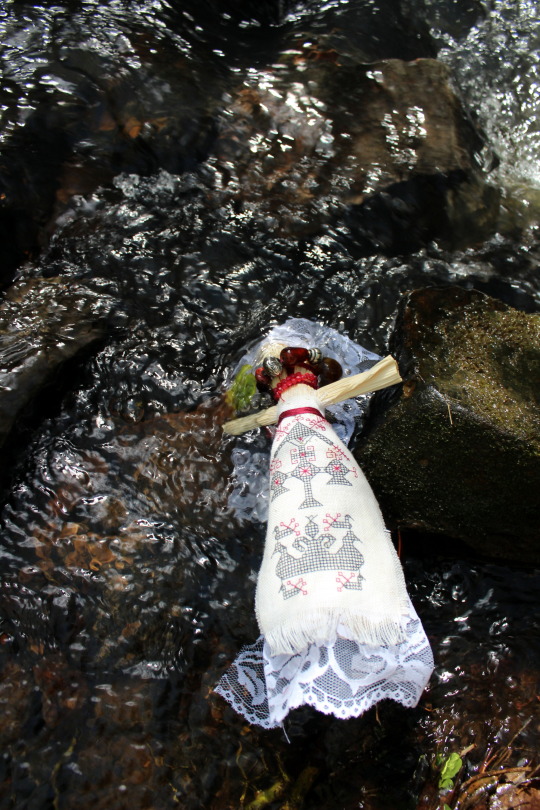
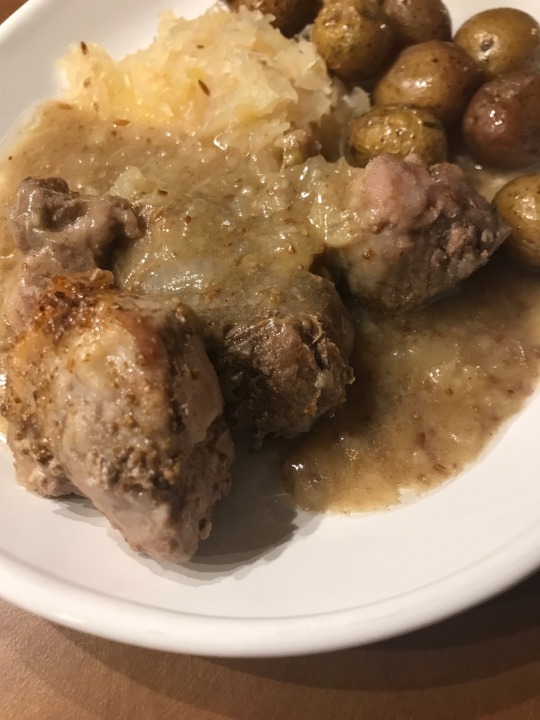

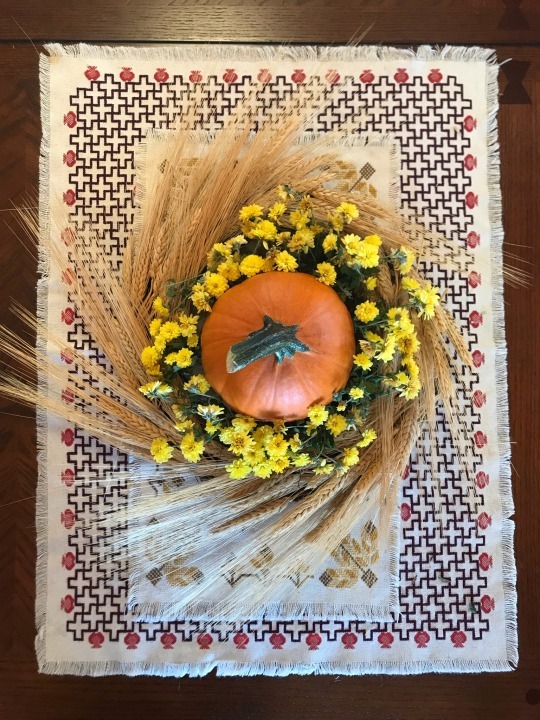



Czech Calendar Customs Master Post
I’m an American who has always been fascinated with family history. The most recent arrivals in my family from the old world were my Great-Grandparents who emigrated from Běhařovice, a small village in Southern Moravia, Perhaps it is because they are my most recent connection to Europe that I’m pulled so strongly toward their traditions. In this post I’ll provide links to my posts documenting my attempts to integrate Czech calendar customs into my practice, as well as other resources. In 2023 I plan on doing more detailed articles and will add them to this article. I am in no way an expert on the customs of Czechia, just a descendant attempting to connect with my ancestors.
From Groundhog Day to the Three Kings: Customs and Traditions of Villages in Znojmo (Southern Moravian district in Czechia that my great-grandparents were from) Machine translated by google
February/March/April 2023 Devotional Schedule
Hromnice
Hromnice is the holiday that takes place at Candlemas/Groundhog Day/Brigid’s Day (February 2nd)
Bearers of Folklore: One More Hour on Hromnice
Background
My 2022 Hromnice candle
2023 Hromnice candle
Blessing my Hromnice candle
Waking Up Perun
Drowning Morana/Smrtka (Around Vernal Equinox)
Background
Drowning Morana 2023
Drowning Morana 2022
Drowning Morana 2021
Drowning Morana 2020
Drowning Smrtka in my Great-Grandparent’s Village
Morana embroidery
Masopust (Carnival)
Background
Fat Thursday Dinner 2022
Kupala Night (Midsummer)
Midsummer 2022
Dozinky (Autumn Equinox)
Background
2022 Dozinky wreathe 1
2022 Dozinky wreath 2
Dušičky (All Soul’s Day)
Dusicky 2022
Koleda (Winter Solstice)
Background
St. Thomas’ Day
Koleda dinner 2022
Christmas and Advent
My St. Andrew’s Eve 2022 (November 30)
St. Andrew’s Eve (November 30)
My St. Barbara’s Day (December 4)
St. Barbara’s Day (December 4)
St. Nicholas’ Eve (December 5)
St. Ambrose Day (December 7)
Feast of the Immaculate Conception (December 8)
St. Lucy’s Day (December 13)
Christmas Eve Dinner Plans for 2022
Christmas Eve Dinner 2022/2023?
St. Stephen’s Day (December 26)
Vanilla crescents/ Vanilkové rohlíčky recipe
Walnut boat fortune telling 2022
Apple fortune telling 2022
Free paper cut out ethnographic nativity scene by painter Maria Fischerová-Kvěchová
My version of the cut out ethnographic nativity scene
Czech and Moravian Christmas Carols
2022 Czech inspired Christmas embroidery
Foods for the New Year
New Year’s Sweepers
New Year’s Lunch
Feast of the Three Kings
98 notes
·
View notes
Text
Today in Christian History

Today is Friday, February 23rd, 2024. It is the 54th day of the year in the Gregorian calendar; Because it is a leap year, 312 days remain until the end of the year.
1680: Death of Thomas Goodwin (pictured above), a notable English Congregational Nonconformist preacher. He had been a member of the Westminster Assembly of 1650, and author of many biblical and theological works. His last words were: “Ah, is this dying? How I have dreaded as an enemy this smiling friend.”
1719: Death in Tranquebar, India, of thirty-six-year-old Bartholomew Ziegenbalg, missionary to India, who has established a seminary, translated the New Testament into Tamil, converted and baptized over two hundred Indians, and constructed a church building. At one point he had been imprisoned by the Dutch who feared his preaching would antagonize the Hindus they administered.
1758: Jonathan Edwards receives a smallpox vaccination from which he contracts the disease. He will die in March.
1819: A new church at Friedensthal on St. Croix Island is consecrated to the worship of the living God by Moravians and their converts. The congregation is so numerous not a third part can get inside the doors.
1846: Following the outrage raised by his publication of “Remarks on Certain Passages in the Thirty-Nine Articles,” in which he has tried to reconcile Church of England teaching with Roman positions, and his migration to the Roman Catholic church, John Henry Newman leaves Oxford for good.
1855: John Bright, a Quaker-born Christian parliamentarian in England, makes an eloquent speech against the Crimean War. Its most famous line is, the “Angel of Death has Been Abroad.”
1918: The body of the Orthodox priest George Porgachevsky is found about a mile and a quarter from the village of Ivanovskoye, Amur region. His head is crushed and he has two bayonet wounds in his stomach. The Soviets had arrested him thirteen days earlier.
1925: Death in Alexandria, Virginia, of Kate Waller Barrett, an American physician, who, as a single mother and member of the Episcopal Church, co-founded the National Florence Crittenton Mission financed by wealthy Charles Nelson Crittenton. She had secured for the mission the first-ever federal charter for a charitable organization.
1929: Lindel Tsen is consecrated as Assistant Bishop of Honan, the first Chinese bishop in an established Anglican diocese. He will become the principal leader of Chinese Anglicanism in the mid-20th century and suffer persecution at the hands of the government.
1934: Death in Baltimore, Maryland, of Peter Ainslie, a Disciples of Christ minister, ecumenical leader, and author of The Scandal of Christianity, a sharp rebuke of divisions among Christians.
1951: Death of Zhang Boling (Chang Po-ling), a prominent Chinese Protestant layman and educator. He had been affiliated with the YMCA, founded Nankai University, accepted women for education, and promoted athletic activities. Because of the school’s patriotism the Japanese had bombed and burned it and succeeding political changes made him unwelcome.
6 notes
·
View notes
Text

“Faull’s volume offers a vital gateway to the hidden historical treasures of the Susquehanna River Valley in the eighteenth century. Addressing a rich tapestry of cultures, this book invites scholars and students of Moravian missions, Native American studies, and Indigenous-European contact history to delve into the intriguing stories of this diverse region.”
#uwlibraries#history books#american history#primary sources#religious history#native american history#18th century
4 notes
·
View notes